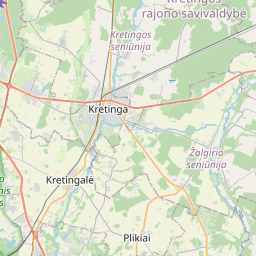
Palanga - The Summer Capital of Lithuania, Palanga, Lithuania
Palanga on the west coast of Lithuania was founded by a Polish-Lithuanian Count, a member of the Tiškevičiai dynasty. The family had land in both Poland and Lithuania including most of the land that surrounded what was then a small fishing village named Palanga. Around the mid-nineteenth century they used Palanga as a summer retreat and built some splendid wooden villas there including their Palanga Mansion. Many of these wooden villas can still be seen today. When Lithuania achieved independence in 1990 a Register of Immovable Cultural Heritage Properties of the Republic of Lithuania was created and many of these lovely villas were added to this register ensuring their protection. Several of them have been restored and are now being used as restaurants, hotels and residences. All these villas were given names, mostly romantic, which they still retain today. For example, Villa Romeo that stands beside Villa Juliet.
Count Feliksas Tiškevičiai was governor of Palanga from 1891 until 1940. He decided to make Palanga his home and built many more villas and was also responsible for improving the amenities of the town. This including funding the construction of the grandiose, neo-Gothic Most Holy Virgin Mary’s Ascension Church. When this brick church was completed in 1907 it replaced the small wooden Catholic church that had served the town for 140 years. The old wooden church was subsequently demolished. At seventy-six metres high the church is still the tallest building in Palanga and it is generally accepted that no building in town should rise above it. ...... (follow the instructions below for accessing the rest of this article).
Count Feliksas Tiškevičiai was governor of Palanga from 1891 until 1940. He decided to make Palanga his home and built many more villas and was also responsible for improving the amenities of the town. This including funding the construction of the grandiose, neo-Gothic Most Holy Virgin Mary’s Ascension Church. When this brick church was completed in 1907 it replaced the small wooden Catholic church that had served the town for 140 years. The old wooden church was subsequently demolished. At seventy-six metres high the church is still the tallest building in Palanga and it is generally accepted that no building in town should rise above it. ...... (follow the instructions below for accessing the rest of this article).
How it works: The full article is featured in the app "GPSmyCity: Walks in 1K+ Cities" on Apple App Store and Google Play Store.
Download the app to your mobile device to read the article offline and create a self-guided walking tour to visit the sights featured in this article. The app's navigation functions guide you from one sight to the next. The app works offline, so no data plan is needed when traveling abroad.
Sights Featured in This Article






Guide Name: Palanga - The Summer Capital of Lithuania
Guide Location: Lithuania » Palanga
Guide Type: Self-guided Walking Tour (Article (B))
Author: Valery Collins
Read it on Author's Website: https://www.experiencedtraveller.com/journal/2018-10-21-palanga-the-summer-capital-of-lithuania
Sight(s) Featured in This Guide:
Guide Location: Lithuania » Palanga
Guide Type: Self-guided Walking Tour (Article (B))
Author: Valery Collins
Read it on Author's Website: https://www.experiencedtraveller.com/journal/2018-10-21-palanga-the-summer-capital-of-lithuania
Sight(s) Featured in This Guide:
- Villa Romeo
- Most Holy Virgin Mary’s Ascension Church
- Jonas Basanavicius street
- Exile and Resistance Museum
- Illusions House in Villa Aldona
- Villa Juros Akis
- Villa Mahorta
- Vandenis
- Sculpture Blessing Christ
- Birute Park
- Palanga Amber Museum
- Pier
- Palanga Resort Museum
The Most Popular Cities
/ view all